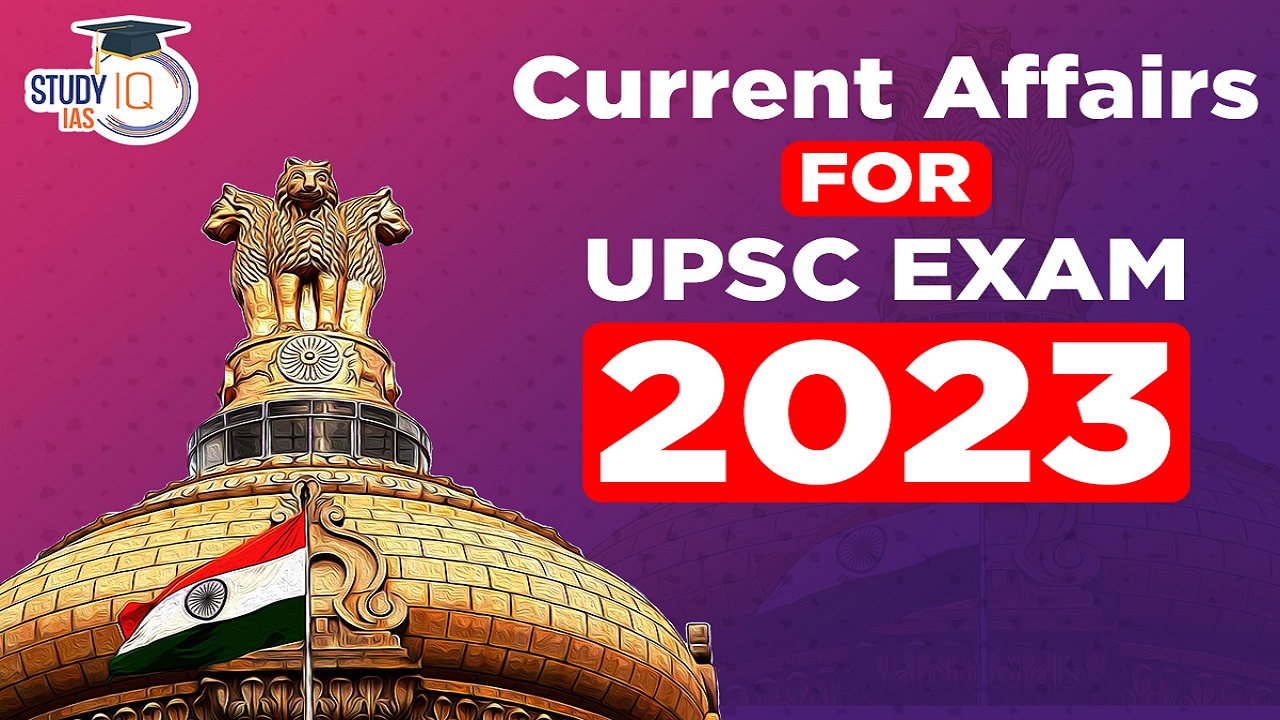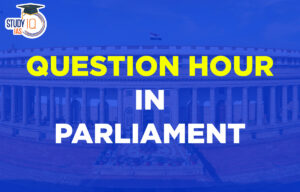Current Affairs 22nd May 2023 for UPSC Prelims Exam
Calcium-41 Radiometric Dating
Context: Scientists have suggested using calcium-41 for radiometric dating to overcome the drawbacks of carbon dating.
About Calcium-41 Radiometric Dating
- Calcium-41 is produced when cosmic rays from space interact with calcium atoms in the earth’s crust. Calcium-41 has a half-life of 99,400 years.
- Using calcium-41 for radiometric dating is challenging because it is rarer, occurring once in around 1,015 calcium atoms.
- New technique for radiometric dating of calcium-41:
- Researchers have proposed atom-trap trace analysis (ATTA) as a solution for the problem. ATTA is sensitive enough to spot calcium-41 atoms; specific enough to not confuse them for other similar atoms and fits easily on a tabletop.
- Working:
- ATTA’s laser frequency is tuned such that it imparts the same energy as required for an electron transition in calcium-41.
- The energy is absorbed and released by the electrons, revealing the presence of calcium-41. Researchers have managed to identify one calcium-41 atom in every 1,016calcium atoms with 12% precision.
- Possible applications:
- The ATTA technique can be used to study how long some rock has been covered by ice, by measuring the Calcium-41 abundance in some rock samples.
- In warmer climates, glaciers retreat and allow rock below to accumulate calcium-41. In colder climate, glaciers advance and prevent the calcium-41 from reaching the rock.
Radiometric Dating:
- Radiometric dating is a methodology to calculate age of geologic materials by measuring the presence of a short-life radioactive element. Ex: C-14, potassium-14/argon-40 etc.
Carbon Dating:
- Carbon dating is a widely used method to establish the age of once living organic materials, using C-14.
- When an organic entity is alive, it keeps absorbing and losing carbon-14 atoms. After its death, this interaction stops, and the existing carbon-14 starts to decay away.
- The difference between the relative abundance of C-14 atoms in the body and the number that should have existed help researchers estimate when the entity died.
Current Affairs 20th May 2023 for UPSC Prelims Exam
Contempt of Court
Context: Contempt proceedings have been sought against the Uttar Pradesh and Punjab governments for appointing “Acting” Directors-General of Police (DGPs) by violating apex court orders since 2006.
About Contempt of Court
It seeks to protect judicial institutions from motivated attacks and unwarranted criticism, and as a legal mechanism to punish those who lower its authority.
Constitutional and Legal Provision
- Article 129: It confers on the Supreme Court the power to punish contempt of itself.
- Article 215: It confers a corresponding power on the High Courts.
- The Contempt of Courts Act, 1971: It defines the power of courts to punish for their contempt and regulates their procedure.
About Contempt of Courts Act, 1971
- According to it, contempt refers to the offence of showing disrespect to the dignity or authority of a court. It defines both civil and criminal contempt:
- Civil contempt: Willful disobedience to any judgment of the court.
- Criminal contempt: An act that tends to scandalize and lower the authority of the court or interferes with due course of any judicial proceeding or obstructs with administration of justice.
- Registering contempt :
- The court can take sou motu notice and initiate contempt proceedings.
- The Attorney General, the Solicitor General or the Advocate General may initiate a case of criminal contempt.
- Private complaints need the consent of the Attorney General or the Advocate General in writing to register.
- Powers to punish:
- High Courts have been given special powers to punish contempt of subordinate courts, as per Section 10 of The Contempt of Courts Act of 1971.
- In 1991, the Supreme Court has ruled that it has the power to punish for contempt not only of itself but also of high courts, subordinate courts and tribunals functioning in the entire country.
- Punishments:
- The Supreme Court and high courts have the power to punish for contempt of court, either with simple imprisonment for a term up to six months or with fine up to 2,000 or with both.
International Pathogen Surveillance Network (IPSN)
Context: WHO has launched International Pathogen Surveillance Network (IPSN), a global network to help swiftly detect the threat from infectious diseases and share the information to prevent their spread.
About International Pathogen Surveillance Network (IPSN)
- The International Pathogen Surveillance Network (IPSN) is a global network of pathogen genomic actors and is hosted by WHO hub.
- Functions:
- Platform provided by IPSN will connect countries and regions, improving systems for collecting and analyzing samples.
- IPSN ensures infectious disease threats are identified swiftly and tracked while the information is shared and acted on to prevent catastrophes.
- IPSN allows faster detection of new pathogens and the enhanced tracking of the spread and evolution of diseases caused by these pathogens.
- Mechanism:
- IPSN will make use of the pathogen genomics to analyze the genetic code of viruses, bacteria and other disease-causing organisms.
- It will help understand how deadly they are, and how they spread. This can help in tracking outbreaks and developing treatments and vaccines.
Significance:
- It will enable stronger national and international surveillance systems for detecting and characterizing new threats.
- It will enable greater innovation in pathogen genomics.
- IPSN will help increase scale and efficiency of country capacity building.
- It will help provide political attention and financing efficiency.
Review Petition
Context: Recently, Central government files review petition against SC order on Delhi services.
About Review Petition
- The review petition is a petition in which it is prayed before the Court of law to review its order or judgement which it has already pronounced.
- The Court may accept a review petition when a glaring omission or patent mistake or like grave error has crept in earlier by judicial fallibility.
- Constitution: Under Article 137 of the Constitution, subject to the provisions of any law and rules made under Article 145, the Supreme Court has the power to review any judgment pronounced or order made by it.
- This power is given to the Supreme Court to correct a “patent mistake” or “grave error” resulting in miscarriage of justice and not to fix minor mistakes of inconsequential results.

Procedure to consider a Review Petition
- As per 1996 rules framed by the Supreme Court, a review petition must be filed within 30 days of the date of judgment or order.
- Review petitions are heard by the same combination of judges who delivered the order or judgment that is sought to be reviewed.
- If a judge has retired or is unavailable, a replacement is made keeping in mind the seniority of judges.
Grounds For Review Petition
- In a 2013 ruling, the Supreme Court itself laid down three grounds for seeking a review of a verdict it has delivered:
- The discovery of new and important matter or evidence which, after the exercise of due diligence, was not within the knowledge of the petitioner or could not be produced by him.
- Mistake or error apparent on the face of the record.
- Any other sufficient reason i.e a reason that is comparable to the other two grounds.
- Supreme Court also added that the mere possibility of two views on the subject cannot be a ground for review.
Who can file a Review Petition?
- It is not necessary that only parties to a case can seek a review of the judgment on it.
- As per the Civil Procedure Code and the Supreme Court Rules, any person aggrieved by a ruling can seek a review.
- However, the court does not entertain every review petition filed. It exercises its discretion to allow a review petition only when it shows the grounds for seeking the review.
What happens if a Review Petition Fails?
- As the court of last resort, the Supreme Court’s verdict cannot result in a miscarriage of justice.
- In Roopa Hurra v Ashok Hurra (2002), the court itself evolved the concept of a curative petition, which can be heard after a review is dismissed to prevent abuse of its process.
- A curative petition is also entertained on very narrow grounds like a review petition, and is generally not granted an oral hearing.
Non-Sugar Sweeteners (NSS)
Context: Recently, World Health Organization (WHO) issued new guidelines advising against the use of non-sugar sweeteners (NSS) like aspartame, saccharin, stevia and other derivatives as a “healthy” alternative to sugar.
About Non-sugar sweeteners (NSS)
- Non-sugar sweeteners (NSS) are marketed as low or no-calorie alternatives to free sugars which aid in weight loss, and in controlling blood glucose in individuals with diabetes.
- NSS categories studied by WHO include acesulfame K, aspartame, advantame, cyclamates, neotame, saccharin, sucralose, stevia, and stevia derivatives.
- Aspartame is popularly used to sweeten diet colas that claim to have ‘no sugar, no calories.’ Saccharin is used, for instance, to sweeten tea or coffee.
Study of WHO on NSS
- The WHO analyzed 283 studies on NSS intake in adults and children.
- Higher intake of NSS was associated with a 76% increase in obesity risk and a 0.14 kg/m2 increase in BMI.
- No evidence of long-term benefits on reducing body fat was found, and long-term use of NSS may increase the risk of Type 2 diabetes, cardiovascular diseases, chronic kidney disease, and cancer.
- India’s Concern: India has a high obesity rate and a significant number of people with pre-diabetes.
- Lifestyle-related Type 2 diabetes is increasing among young individuals.
Harmful effects of NSS
- Risk of cardiovascular disease: Some studies have suggested that the consumption of artificial sweeteners may be linked to an increased risk of certain cardiovascular issues, such as heart disease, stroke, and high blood pressure.
- Digestive issues: Artificial sweeteners may interfere with the proper functioning of the digestive system, causing issues such as bloating, gas, and diarrhoea.
- Increased risk of depression: Some studies have shown a correlation between the consumption of artificial sweeteners and an increased risk of depression, which is thought to be because on brain chemistry and serotonin levels.
Recommendation of WHO
- Aim: To establish healthy eating habits throughout one’s life, improve the quality of the diet, and decrease the risk of non-communicable diseases (NCDs) on a global scale.
- NSS should not be used for weight control or reducing the risk of diet-related non-communicable diseases.
- Individuals should lower their consumption of free sugars, which include added sugars and sugars naturally found in honey, syrups, and fruit juices.
- Consume foods that contain naturally occurring sugars, such as fruits, or opt for unsweetened food and beverages.
- WHO recommends focusing on a balanced diet and minimally processed, unsweetened foods and beverages.



 Question Hour in Parliament: Meaning, Ty...
Question Hour in Parliament: Meaning, Ty...
 Daily Quiz 18 July 2025
Daily Quiz 18 July 2025





















